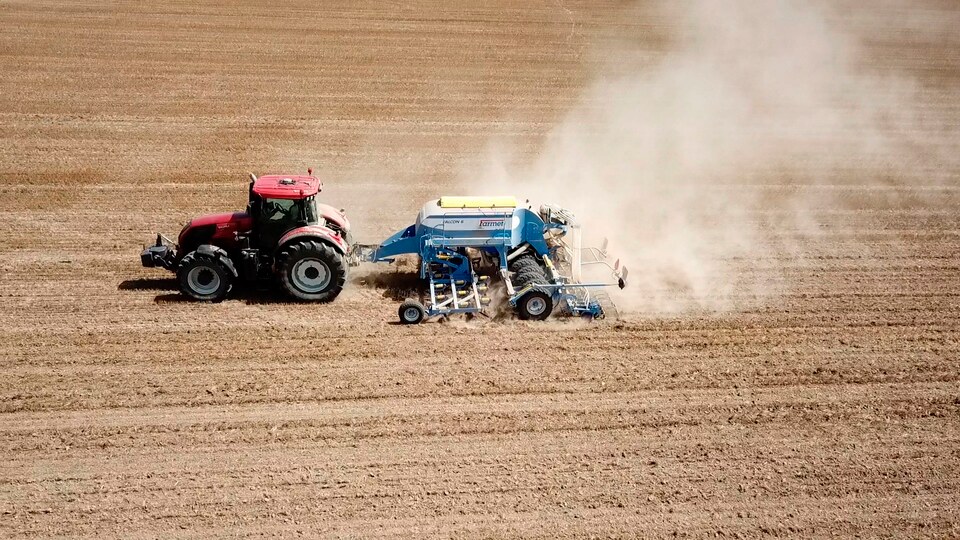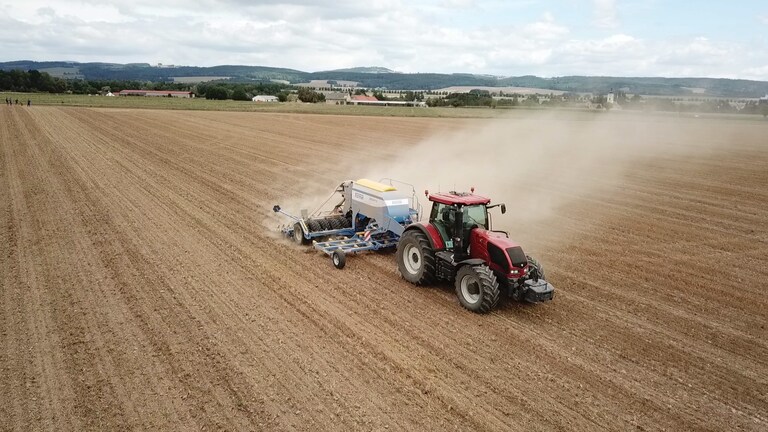The report from last year’s seeding is available here. Thanks to the special chisel section the machine is equipped with, the soil is loosened during seeding in the strips of the future crop rows. The row spacing is ideal: 25 cm! The width of the loosened strips ranges from 10 to 15 cm at a depth of 15 – 20 cm.
 The advantage of this seeding method is conserving soil moisture while maintaining an ideal planting distance of the crop. It is especially ideal in dry years, such as the last one in the Czech Republic. The seeds are placed into freshly loosened soil and thus they can maximally use the residual moisture. Such established crops emerge and grow much better. When compared with seeding into a cultivated stubble field in dry years, establishing crops directly in a stubble field makes them substantially more balanced and thicker. It seems that these advantages must be compensated by a lower yield. However, the more balanced crops from direct seeding allow better agronomic management and they also respond well to low precipitation. The moisture conserved by the reduced strip soil cultivation may also be crucial. Every millimetre of precipitation that the plant can use matters in extremely dry years. Therefore, the directly seeded crops may really have higher yields than the crops seeded in a cultivated stubble field or tillage. ZOD Žichlínek also noticed such results during their harvest this year. The yield of the directly seeded crop was 3.8t/ha, while the crop seeded in a stubble field under comparable conditions only yielded 3.5t/ha. The total economic effect is very interesting when we include savings in the costs per soil cultivation.
The advantage of this seeding method is conserving soil moisture while maintaining an ideal planting distance of the crop. It is especially ideal in dry years, such as the last one in the Czech Republic. The seeds are placed into freshly loosened soil and thus they can maximally use the residual moisture. Such established crops emerge and grow much better. When compared with seeding into a cultivated stubble field in dry years, establishing crops directly in a stubble field makes them substantially more balanced and thicker. It seems that these advantages must be compensated by a lower yield. However, the more balanced crops from direct seeding allow better agronomic management and they also respond well to low precipitation. The moisture conserved by the reduced strip soil cultivation may also be crucial. Every millimetre of precipitation that the plant can use matters in extremely dry years. Therefore, the directly seeded crops may really have higher yields than the crops seeded in a cultivated stubble field or tillage. ZOD Žichlínek also noticed such results during their harvest this year. The yield of the directly seeded crop was 3.8t/ha, while the crop seeded in a stubble field under comparable conditions only yielded 3.5t/ha. The total economic effect is very interesting when we include savings in the costs per soil cultivation.
